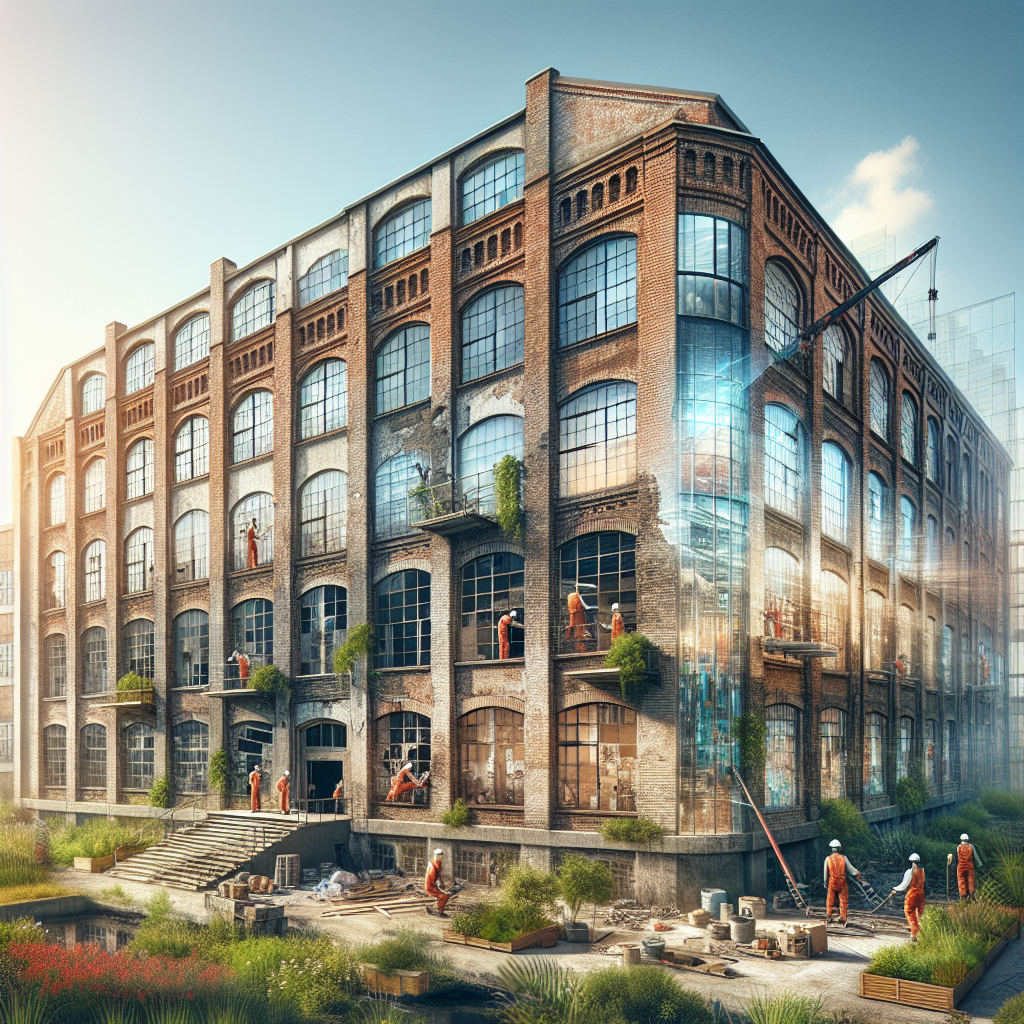Adaptive Reuse: Giving Old Buildings New Life
In an era where sustainability and preservation are becoming increasingly vital, adaptive reuse stands out as a forward-thinking approach to development. This process involves repurposing old, often historic buildings for new uses while retaining their essential character. Adaptive reuse is not only a testament to our architectural heritage but also a practical solution to modern challenges, offering sustainability, economic benefits, and preserving cultural identity. This article delves into the concept of adaptive reuse, showcasing its significance and the myriad ways it breathes new life into old structures.
The Essence of Adaptive Reuse
Adaptive reuse is an architectural and design practice that creatively repurposes old buildings, giving them a new function while maintaining their historical essence. This approach contrasts with demolition, advocating for the revitalization of buildings whose original purpose has become obsolete. From converting factories into loft apartments, churches into restaurants, or railway stations into museums, adaptive reuse is about reimagining the potential of spaces with history.
Sustainability and Environmental Benefits
One of the most compelling arguments for adaptive reuse is its environmental impact. By repurposing existing structures, we significantly reduce the need for new materials and construction, thereby lowering carbon emissions and waste. Buildings account for a significant portion of energy consumption and carbon emissions globally, and adaptive reuse offers a path to more sustainable development practices. Moreover, it conserves the energy embedded in the existing building, making it a form of recycling on a grand architectural scale.
Economic Incentives
Beyond environmental considerations, adaptive reuse presents substantial economic benefits. Renovating and repurposing a building can be considerably less expensive than new construction, especially when factoring in the costs associated with demolition and waste removal. Additionally, these projects can stimulate local economies by attracting businesses and tourism, especially when they involve landmark buildings with historical significance. Tax incentives and grants for historic preservation can also play a crucial role in making adaptive reuse projects financially viable.
Preserving Cultural Heritage
Adaptive reuse is deeply intertwined with the preservation of cultural heritage. It allows communities to retain buildings that embody their history and identity, providing a tangible link to the past. By repurposing these structures, we ensure they remain active parts of the urban fabric, contributing to a city’s character and diversity. This approach respects the craftsmanship and architectural innovation of previous generations, celebrating their legacy in a contemporary context.
Challenges and Considerations
Despite its benefits, adaptive reuse comes with its set of challenges. Ensuring modern functionality and compliance with current building codes while preserving historical features requires careful planning and creativity. Structural issues, asbestos, lead paint, and other hazardous materials can complicate renovations. Moreover, navigating the regulatory landscape of historic preservation can be daunting. Successful adaptive reuse projects demand a collaborative effort among architects, developers, preservationists, and community stakeholders.
Examples of Adaptive Reuse
Across the globe, there are countless success stories of adaptive reuse. The High Line in New York City transformed a disused elevated railway into a vibrant urban park. The Tate Modern in London, once a power station, is now a landmark contemporary art museum. These projects showcase the potential of adaptive reuse to create spaces that are both functional and inspirational, blending history with innovation.
The Future of Adaptive Reuse
As we look to the future, the importance of adaptive reuse in our urban landscapes will only grow. It represents a sustainable path forward in development, balancing growth with preservation. As cities evolve, adaptive reuse can provide the creativity and flexibility needed to meet changing needs, making our built environment more resilient, sustainable, and connected to our heritage.
FAQs
Q: What is the primary goal of adaptive reuse?
A: The primary goal is to repurpose outdated or unused buildings for new functions, making them viable and functional while preserving their architectural and historical value.
Q: Why is adaptive reuse considered sustainable?
A: It reduces the demand for new construction materials, minimizes waste, and conserves the embodied energy within the existing building, making it an environmentally friendly alternative to demolition and new construction.
Q: Can any building be a candidate for adaptive reuse?
A: While many buildings can be repurposed, not all are suitable for adaptive reuse. Factors such as structural integrity, location, historical significance, and potential for new use must be considered.
Q: How does adaptive reuse benefit communities?
A: It revitalizes neighborhoods, stimulates economic growth, attracts tourism, and helps maintain a sense of identity and continuity within the community.
Q: Are there financial incentives for adaptive reuse projects?
A: Yes, many regions offer tax credits, grants, and other incentives for preserving historic buildings and undertaking adaptive reuse projects.
Adaptive reuse represents a bridge between the past and the future, offering a sustainable, economically viable, and culturally respectful approach to development. By reimagining the possibilities of old buildings, we can create vibrant, dynamic spaces that honor our heritage while serving contemporary needs. Adaptive reuse is not just about preserving structures but redefining them, ensuring they remain an active and meaningful part of our urban landscape.

